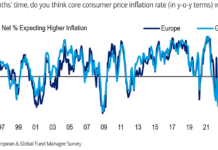UBS House View, published by Mark Haefele, Global Wealth Management chief investment officer; Brian Rose, senior US economist, CIO America; Jon Gordon, strategist, UBS AG Hong Kong Branch; Vincent Heaney, […]
Home Risk&Return RR-Investor Demand Investor Demand: How Trump tariffs could affect investor appetite for dollar, risk...












